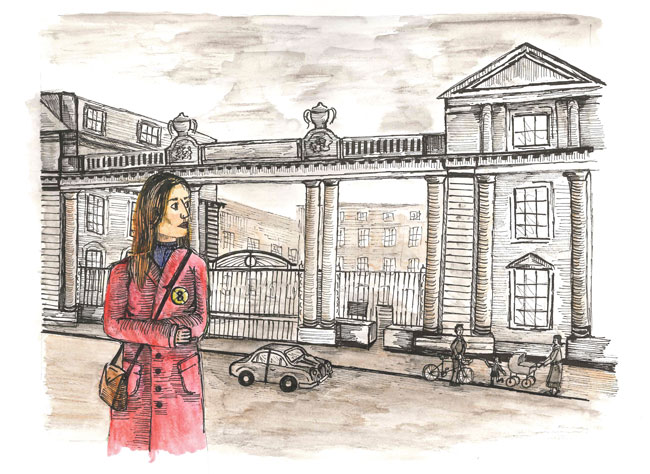National discourse surrounding the repeal of the eighth amendment has been presented as a binary one: to repeal or not to repeal. After a recent referendum advocating that University College Dublin Students’ Union’s (UCDSU) adopt a neutral stance on abortion failed, both UCDSU and Trinity College Dublin Students’ Union (TCDSU) are now lobbying for legal access to abortion. This requires repealing the eighth amendment. But there has been little national debate as to what the legislation replacing it would look like – and it will soon be too late to affect this. Considering the wildly different possibilities, the lack of this debate increases the likelihood of bad outcomes.
The government has announced that if a referendum on the issue is called, the Dáil will have already prepared a law to give context to the ensuing campaign. What are their options? The easiest option for the government would be not to pass any new law at all and let the 2013 Protection of Life During Pregnancy Act stand. It allows women to travel abroad and abortion in cases when the woman’s life is in danger – including suicide. Proponents of this option would argue that while something as specific as the interaction between the right to travel and the right to life of the unborn shouldn’t be locked into the constitution, there is no need for change in the existing legislation.
The next step towards decriminalisation would be a law that adds cases in which “the pregnancy is a result of rape or incest, or there is a diagnosis of a fatal foetal impairment”. This is what Amnesty International seeks and would allow Ireland to finally meet the obligations under international human rights law. However, most people in favour of repealing the eighth amendment would view this as far too little. Taking it a step further would allow abortions for any reason in the very early stages of pregnancy or loosen restrictions in cases of a non-fatal defect. Finally, the slider of when abortion is permitted “for any reason” can be moved anywhere from the first three months, first six months to viability outside the womb, when it is believed to feel “pain”, two weeks before viability or even done away with completely.
Having seen the spectrum of legal options, we need to acknowledge that there is also a variety of different rationales for allowing abortions
After all, Canada, in fact, has no laws whatsoever on regulating abortion. It is in this respect an interesting case: there have been no statistics for years, with many provinces or institutions not reporting abortions, but in 2006, 90 per cent of abortions were in the first trimester and only 0.4 per cent were after 20 weeks, hinting that such a system has outcomes not too dissimilar to that of Britain’s and could potentially be an option here too.
Having seen the spectrum of legal options, we need to acknowledge that there is also a variety of different rationales for allowing abortions. Are we allowing it in the name of bodily integrity? If so, would we allow bodily integrity to trump the right to life of an adult, a relevant question in the context of organ donations? Are we allowing it for utilitarian reasons and questions of equality? For example, teenage pregnancies are concentrated in disadvantaged areas, and the children have worse life outcomes than others. Women also disproportionately bear the burden of childrearing. If so, what does that say about our views of minority rights against the good of the majority? Are we simply being cynical and accepting that abortions are going to happen anyway – either in England or as illegal abortions?
In this view, making abortion legal would improve health conditions and stop unwanted pregnancies being a financial burden on Ireland’s poorest without actually causing more abortions. However, such a rationale offers little clue to how we might regulation the provision of abortion. Finally, we could simply choose a somewhat arbitrary point before which foetuses are not “human” and allow abortions before then. The debate then moves to when that point should be. Deciding how to justify repealing is something that needs to be decided in advance.
The debate as to what post-eighth amendment Ireland looks like is beginning now, but we seem to be unable to contribute more than a litany of appeals to emotion
However, more important than either the law or the rationale is what will happen in practice. Currently, the law allows for conscientious objectors. Prof Gerry Whyte of Trinity’s School of Law has argued that it doesn’t go far enough, and we should allow institutions and other hospital staff to register as conscientious objectors. On the other hand, Italy’s provision of abortion is limited by the fact that 70 per cent of doctors there are objectors.
This is just the tip of the iceberg of possible outcomes and thorny questions arising from a repeal. People wary of repealing the eighth or who would only favour a partial legalisation of abortion are aware of this and will be pushed to oppose repealing if their concerns are not addressed and if this debate is not had in a calm and level-headed manner. The debate as to what post-eighth amendment Ireland looks like is beginning now, but we seem to be unable to contribute more than a litany of appeals to emotion. The chance to weigh in will not come again and, unfortunately, our window to be able to contribute is quickly diminishing.







